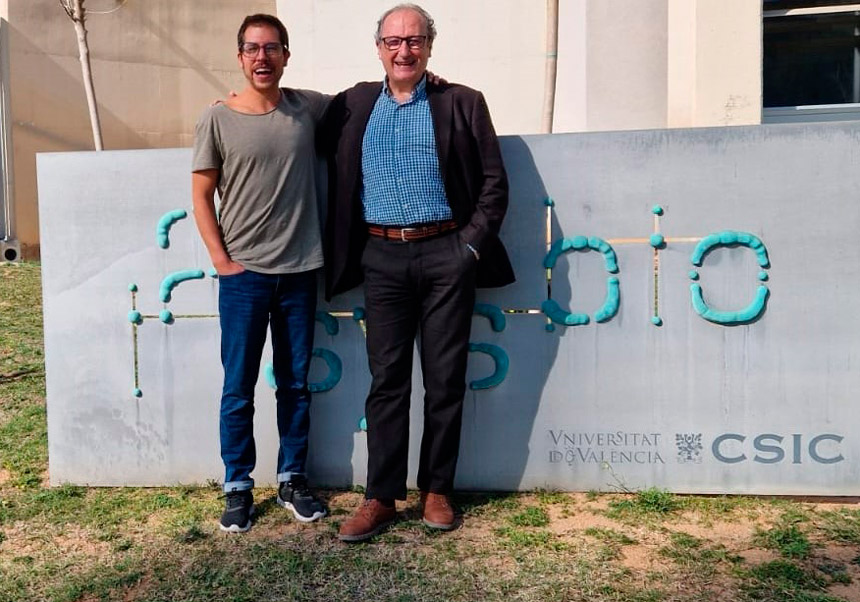Users
Social media
- More details here...
- Address
Parc Científic de la Universitat de València C/
Catedrático Agustín Escardino, 9
46980 Paterna (Valencia) Spain - Email:
iu.i2sysbio@uv.es - Phone:
(+34) 963544810
- Address
Links
Mitchell Ryan Distin defends his thesis on a Second Evolutionary Synthesis

Investigation & Education
Thesis
Mitchell Ryan Distin defends his thesis on a Second Evolutionary Synthesis

This thesis, directed by Andrés Moya, builds a bridge between the sciences of life and the history and philosophy of biology, highlighting the main achievements made by historians and philosophers in the last generation and how these advances can modernize biological thinking. The thesis was defended on March 13, 2023.
The first great synthesis of biology - that is, the Modern Synthesis (1918-1956) - united the subdisciplines of biology and organized them into a coherent theoretical and mathematical framework of evolution, which led to the legitimation of biology as a scientific discipline and of natural selection as an accredited scientific theory. However, although ecology played a fundamental role in the eventual acceptance of the population genetic view of evolution in the synthetic era, it played a minor role in the development of evolutionary theory until the 1980s, when we began to systematically study the evolutionary dynamics of natural populations in space and time. As a consequence, evolutionary theory was initially constructed in an abstract vacuum that was not representative of evolution in nature. The unification of ecology with evolutionary biology has thus advanced our knowledge of the theory of natural selection. We no longer ask whether natural selection acts on natural populations, but rather how natural selection causes adaptation of natural populations in spatiotemporal contexts. Evolutionary biology is currently suspended in an intermediate phase of scientific progress that requires the organization and integration of the overflowing reserves of knowledge – produced by its recent synthesis with ecology – into a coherent and unified theoretical framework, just as happened in the first synthesis. This is where recent advances in the philosophy of biology can be of great use, acting as a bridge between previously divided subdisciplines of biology and inventing new theoretical strategies to organize and accommodate divided knowledge.
This thesis, entitled "Evolution in space and time. The second synthesis between ecology, evolutionary biology and the philosophy of biology" offers a historical reconstruction of the philosophical, technological and natural forces that led to the second synthesis, in the hope of recognizing the significant advances that have occurred in biology in the last generation. The author offers some normative recommendations, prescribing a pluralistic theory of natural selection that can explain complex emergent phenomena (such as evolvability) to finally resolve the paradox of adaptive variation. The thesis builds a bridge between expanded biology and the history/philosophy of biology, highlighting the main achievements made by historians and philosophers in the last generation and how these advances can modernize biological thinking. The first synthesis legitimized biology; the second made her autonomous. Now the time has come again to organize and structure our new knowledge in a coherent theoretical framework, using the theoretical strategies suggested by philosophers to represent a new way of seeing the evolution of life on Earth – and probably beyond.
Mitchell Ryan Distin carried out his doctoral research in the Evolutionary Genetics group under the supervision of Andrés Moya, professor of Genetics at the University of Valencia and researcher at the Institute of Integrative Systems Biology I2SysBio (UV-CSIC). During the development of the research Mitchell Ryan Distin spent a stay at the Department of History and Philosophy of Science at the University of Cambridge. The qualifying panel was made up of Víctor Luque (Universitat de València), Laura Nuño de la Rosa (Complutense University), and Ana Barahona (National Autonomous University of Mexico), who rated the thesis as outstanding.


